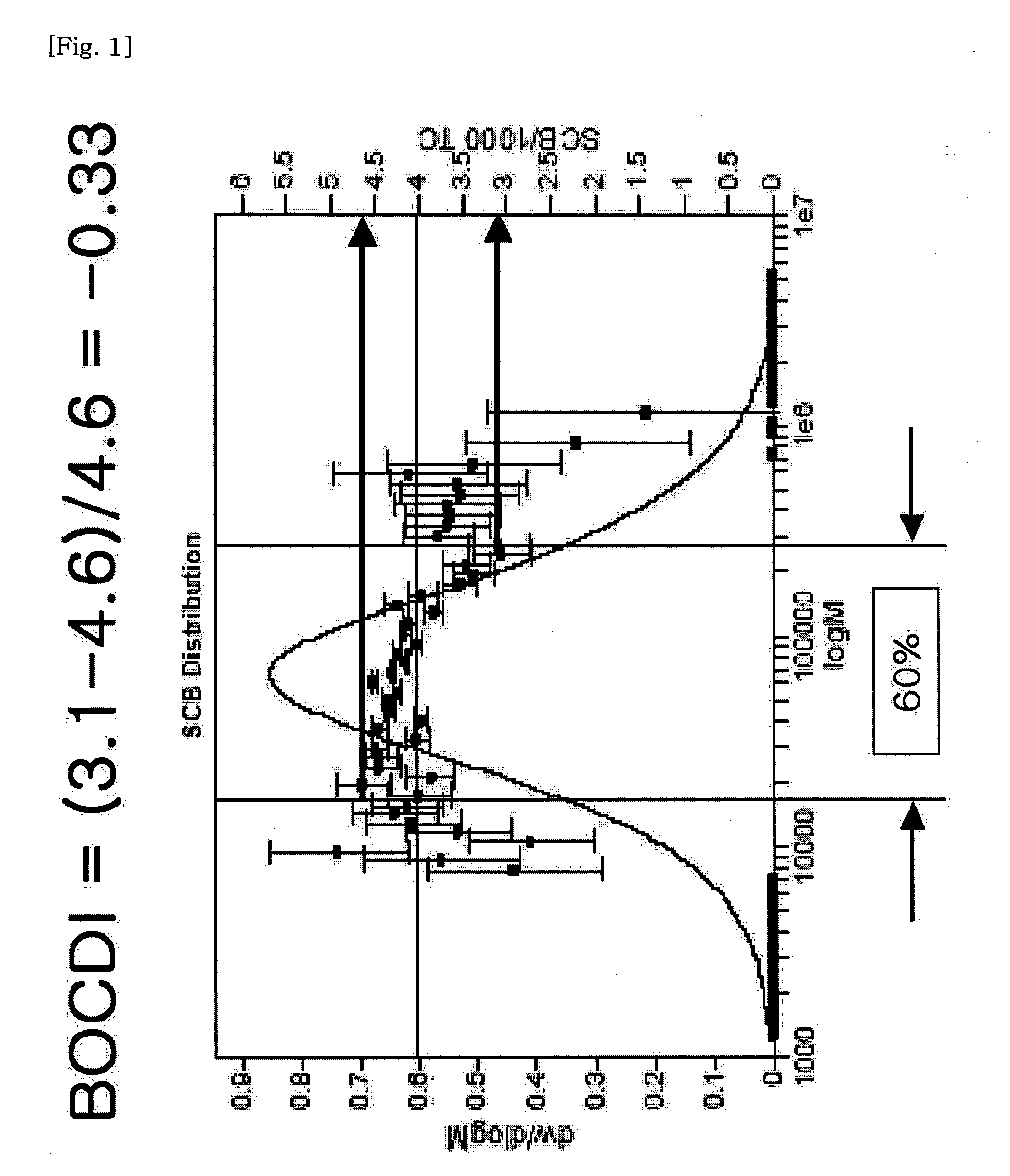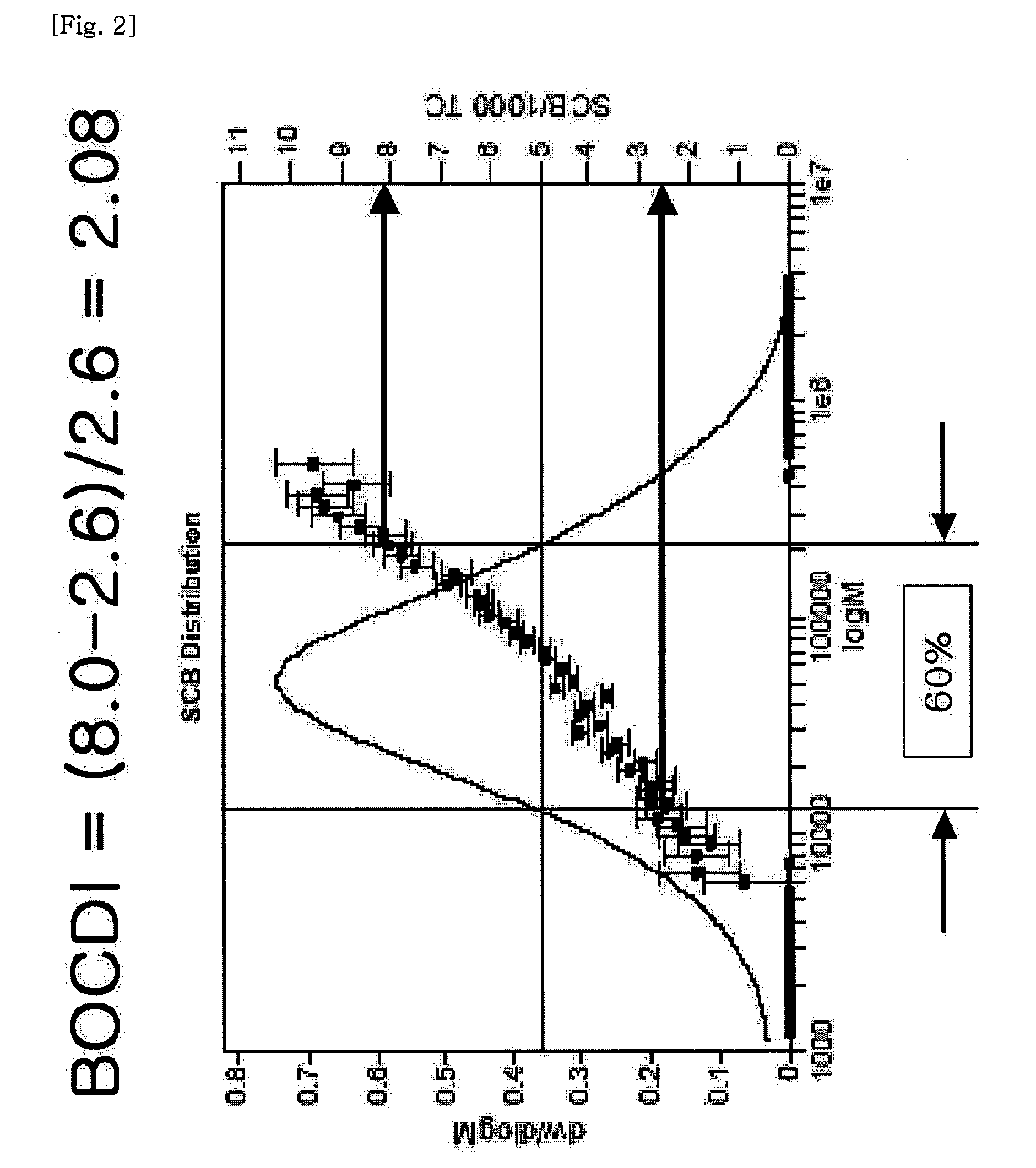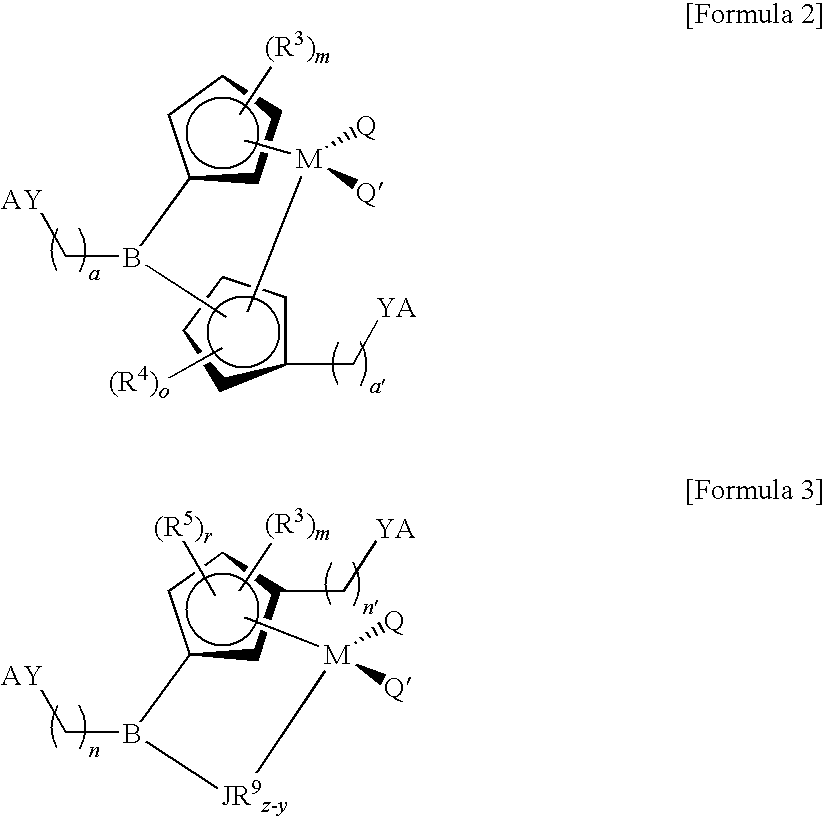Polyolefin and preparation method thereof
a polyethylene and polyethylene technology, applied in the field of polyolefins, can solve the problems of low melting index, limited application to products, poor distortion strength of linear low density polyethylene, etc., and achieve excellent shapability, impact strength, tensile strength, and high die swell property
- Summary
- Abstract
- Description
- Claims
- Application Information
AI Technical Summary
Benefits of technology
Problems solved by technology
Method used
Image
Examples
preparation example 1
Preparation of the First Metallocene Catalyst—Synthesis of [tBu—O—(CH2)6—C5H4]2ZrCl2
[0101]6-chlorohexanol was used to prepare t-Butyl-O—(CH2)6—Cl according to the method that was described in the document (Tetrahedron Lett. 2951 (1988)), and NaCp was reacted in respects to this to obtain t-Butyl-O—(CH2)6—C5H5 (yield 60%, b.p. 80° C. / 0.1 mmHg). In addition, t-Butyl-O—(CH2)6—C5H5 was dissolved in THF at −78° C., normal butyl lithium (n-BuLi) was slowly added thereto, the temperature was increased to room temperature, and the reaction was performed for 8 hours. The solution was additionally reacted at room temperature for 6 hours while the synthesized lithium salt solution was slowly added to the suspension solution of ZrCl4(THF)2 (1.70 g, 4.50 mmol) / THF (30 ml) at −78° C. All the volatile substances were dried under vacuum, and the hexane solvent was added to the obtained oily liquid substance and then filtered. After the filtered solution was dried under vacuum, hexane was added the...
preparation example 2
Preparation of the First Metallocene Catalyst—Synthesis of [tBu—O—(CH2)6—C5H4]2HfCl2
[0104]6-chlorohexanol was used to prepare t-Butyl-O—(CH2)6—Cl according to the method that was described in the document (Tetrahedron Lett. 2951 (1988)), and NaCp was reacted in respects to this to obtain t-Butyl-O—(CH2)6—C5H5 (yield 60%, b.p. 80° C. / 0.1 mmHg). In addition, t-Butyl-O—(CH2)6C5H5 was dissolved in THF at −78° C., normal butyl lithium (n-BuLi) was slowly added thereto, the temperature was increased to room temperature, and the reaction was performed for 8 hours. The solution was additionally reacted at room temperature for 6 hours while the synthesized lithium salt solution was slowly added to the suspension solution of HfCl4 (1.44 g, 4.50 mmol) / THF (30 ml) at −78° C. All the volatile substances were dried under vacuum, and the hexane solvent was added to the obtained oily liquid substance and then filtered. After the filtered solution was dried under vacuum, hexane was added thereto to...
preparation example 3
Preparation of the Second Metallocene Catalyst—Synthesis of [methyl(6-t-buthoxyhexyl)silyl(η5-tetramethylCp)(t-Butylamido)]TiCl2
[0107]After 50 g of Mg(s) was added to the 10 L reactor at normal temperature, 300 mL of THF was added thereto. After I2 was added in an amount of about 0.5 g, the reactor temperature was maintained at 50° C. After the reactor temperature was stabilized, 250 g of 6-t-buthoxyhexyl chloride was added to the reactor at a speed of 5 mL / min by using a feeding pump. According to the addition of 6-t-buthoxyhexyl chloride, it was observed that the reactor temperature was increased by about 4 and 5° C. While 6-t-buthoxyhexyl chloride was continuously added, the agitation was performed for 12 hours. The black reaction solution was obtained after reaction for 12 hours. After 2 mL of the formed black solution was sampled, water was added thereto to obtain the organic layer. Thus, 6-t-buthoxyhexane was confirmed by using the 1H-NMR. Through 6-t-buthoxyhexane, it could ...
PUM
| Property | Measurement | Unit |
|---|---|---|
| Temperature | aaaaa | aaaaa |
| Temperature | aaaaa | aaaaa |
| Weight | aaaaa | aaaaa |
Abstract
Description
Claims
Application Information
 Login to View More
Login to View More - R&D
- Intellectual Property
- Life Sciences
- Materials
- Tech Scout
- Unparalleled Data Quality
- Higher Quality Content
- 60% Fewer Hallucinations
Browse by: Latest US Patents, China's latest patents, Technical Efficacy Thesaurus, Application Domain, Technology Topic, Popular Technical Reports.
© 2025 PatSnap. All rights reserved.Legal|Privacy policy|Modern Slavery Act Transparency Statement|Sitemap|About US| Contact US: help@patsnap.com



